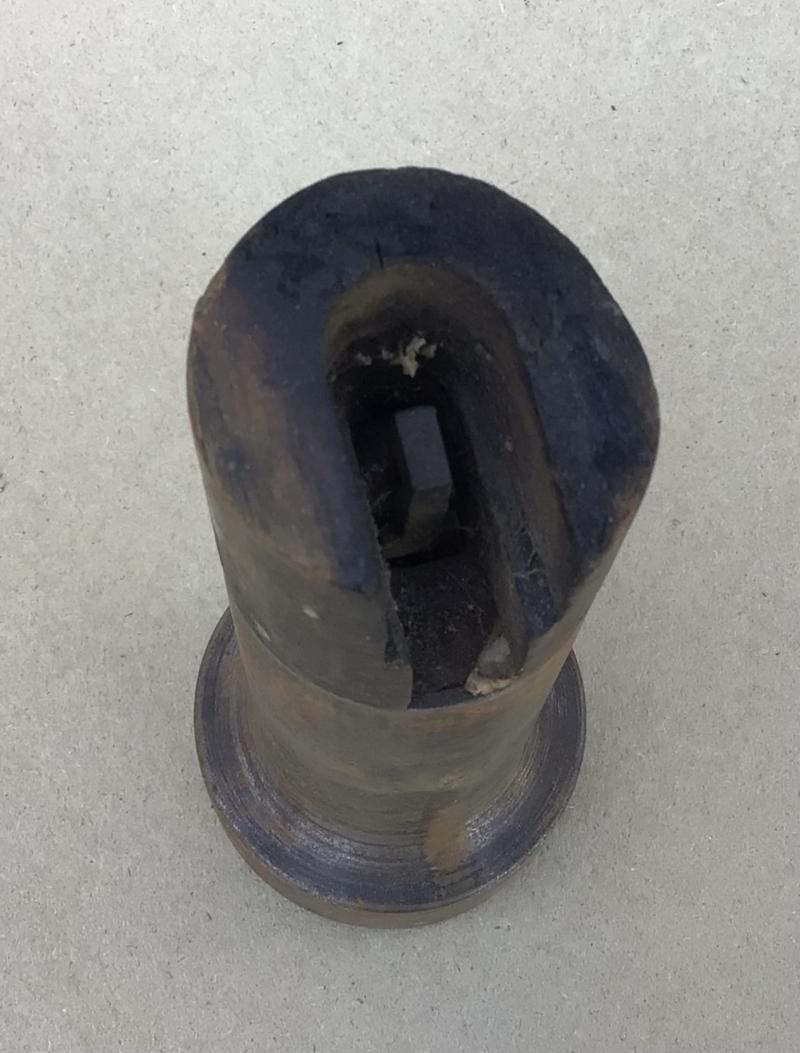WW1 Mk II Garland Grenade
A extremely rare item of WW1 ordnance. Remains of a Mk II Garland mortar grenade. It consists of the cast iron case of the grenade, similar in shape to a mushroom The Garland grenade was generally used with the Garland trench mortar at Gallipoli, although it could be thrown. The grenade consisted of this metal case with a brass top containing the percussion cap. The explosive, three ounces of gelignite, were contained in a sliding zinc cylinder which also contained the detonator and hollow firing pin. The rear of the grenade was made form a shaped wooden block with a recess for a streamer or tail and a metal base plate. Upon firing the wooden block would come away and the streamers would fall out. The grenade would land head first and the pin would hit the percussion cap, igniting the detonator, causing the grenade to explode. These grenade were partially used on Gallipoli.
The Garland grenade was a grenade and trench mortar bomb developed and used by British Empire forces in the First World War. It was invented by the metallurgist Herbert Garland at the Cairo Citadel, and more than 174,000 were issued to the Mediterranean Expeditionary Force. The grenade was also used during the Arab Revolt. The Mark I grenade was relatively primitive, being formed of an explosive-filled food tin with a fuse that was lit with a match. The Mark II version was made of cast iron and could be fired from the Garland Trench Mortar.
The Garland grenade was invented by Herbert Garland, a pre-war metallurgist who was Superintendent of the Explosives Laboratory and Magazines at Cairo Citadel. Garland developed the grenades during the first year of the First World War (1914-1918); some 174,000 would be produced and issued to the Mediterranean Expeditionary Force. They were also used by T. E. Lawrence's Arab Revolt forces in their attacks on the Hejaz Railway. Garland served with Lawrence in Arabia as an explosives expert and was responsible for much of the damage caused to the Ottoman railway system.
The Mark II version of the Garland grenade was typically used in conjunction with the Garland Trench Mortar (or "howitzer"), though it could also be thrown by hand. The Mark II grenade was housed in a mushroom-shaped, cast-iron case. When shipped a plug prevented the detonator, housed in a moving zinc tube, from activating. Upon arrival at the battlefield, the plug was removed and replaced with a bronze screw-threaded pin. The pin would be unscrewed to free the detonator and screwed into the nose of the grenade where it acted as a firing pin. When the grenade struck the ground, nose first, the detonator tube would impact on the firing pin. This would trigger the fuse to detonate 3 ounces (85 g) of gelignite within the zinc tube, fragmenting the case to act as shrapnel. To improve the likelihood the grenade landed nose first, a cloth streamer was fitted at the base within a wooden block that fell away once the grenade was in the air.
This is the only example I have ever come across other than in museums.
Inert.
No export sales.
Code: 823
1500.00 AUD




